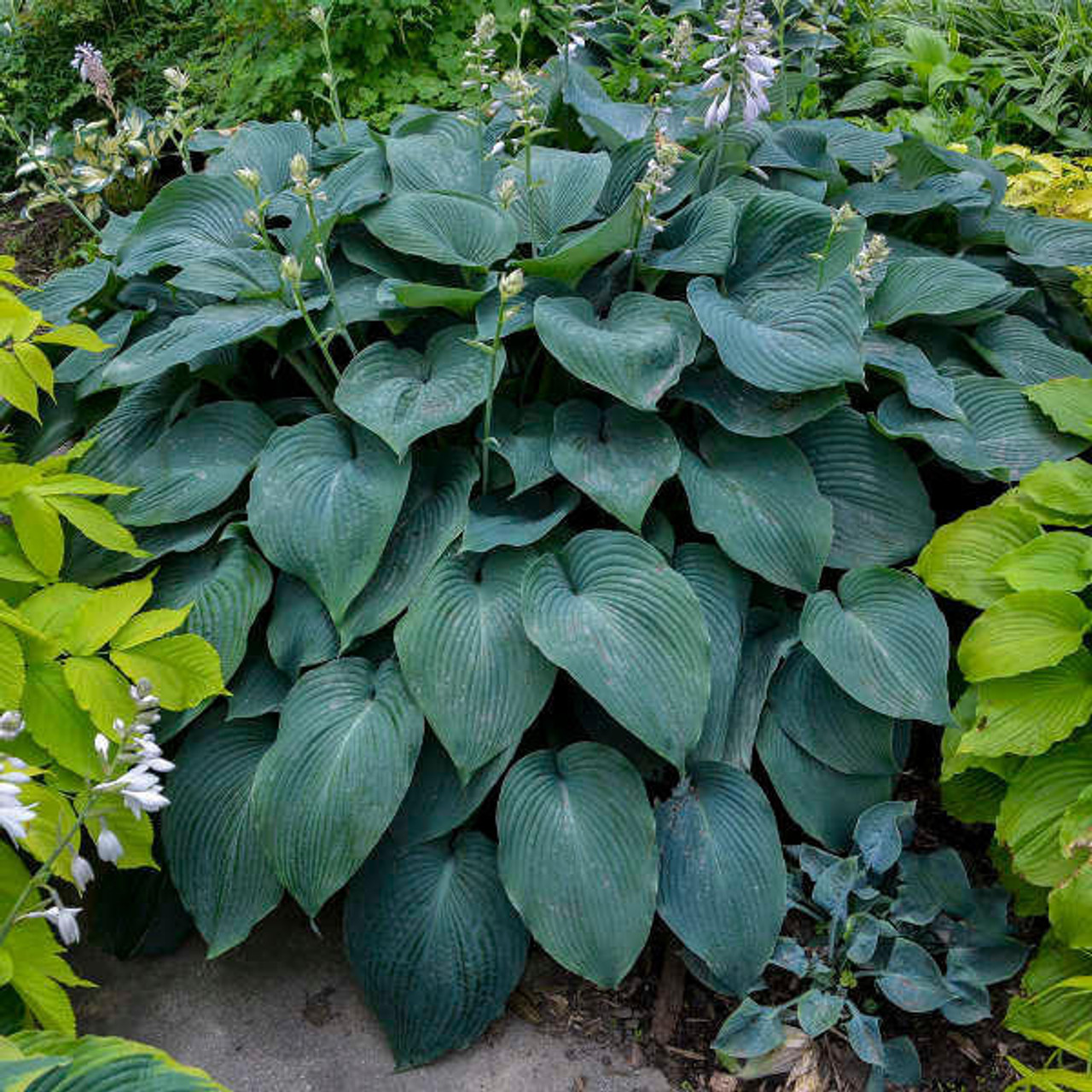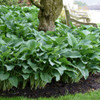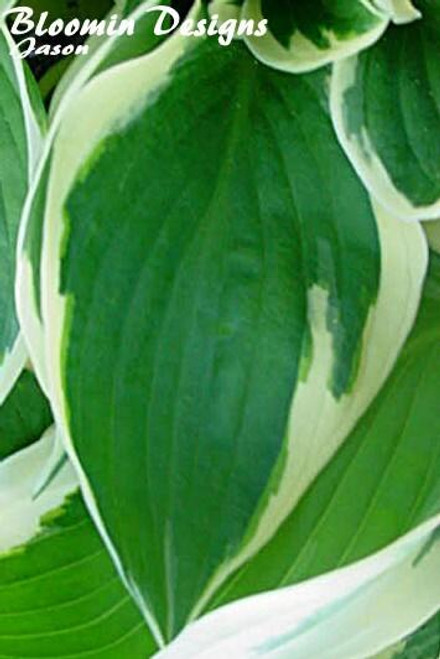Product Description
Hosta 'Blue Angel' (Aden 1986) (4) 1-gallons
Very Large.
Giant blue leaves are broadly oval shape, heavily corrugated and thick substance with rippled margin. Leaves can reach 18 inches long by 12 inches wide. Very upright hosta, horizontally held leaves with tips arching downward.
Mature size - 48 inches wide (or much more) x 36 inch height,
slow to medium growth rate.
Near white flowers are densely clustered and long lasting,
one of the best bloomers.
Large heavy-textured blue leaves form a clump that commands attention.
This is probably the largest blue.
Evenly textured leaves and white flowers create a magnificent specimen.
Parents: Aden 365 X Aden 361.
Hosta 'Blue Angel' is a majestic hosta cultivar that truly lives up to its name. It is one of the largest hosta varieties, known for its impressive size, beautiful blue foliage, and graceful form. Here is a closer look at what makes 'Blue Angel' so special:
Appearance:
- Foliage: 'Blue Angel' forms a massive mound of thick, heart-shaped leaves that can reach up to 16 inches long. The leaves are a striking blue-gray color with a slightly corrugated texture and prominent veins. They have a graceful cascading habit, creating a beautiful, flowing effect in the garden.
- Flowers: In midsummer, 'Blue Angel' sends up tall scapes (flower stalks) that can reach up to 4 feet tall. These scapes bear pale lavender to white flowers that add a touch of elegance to the display.
Growing Conditions:
- Light: Thrives in partial shade to full shade. While it can tolerate some morning sun, it is best to protect it from the hot afternoon sun, especially in warmer climates.
- Soil: Prefers moist, well-drained soil that is rich in organic matter. It can tolerate some dryness once established, but consistent moisture will help it look its best.
- Hardiness Zones: Hardy in USDA zones 3-9, making it suitable for a wide range of climates.
Uses:
- Statement Plant: Its large size and impressive foliage make it a great statement plant in the shade garden.
- Background Plant: It can also be used as a background plant to add height and texture to borders or woodland gardens.
- Underplanting Shrubs: 'Blue Angel' is an excellent choice for underplanting shrubs or roses, as its large leaves help to suppress weeds and retain moisture.
- Containers: It can also be grown in large containers, where its cascading foliage can be displayed beautifully.
Additional Benefits:
- Slug Resistant: The thick leaves of 'Blue Angel' are more resistant to slugs than many other hosta varieties.
- Low Maintenance: It is a relatively low-maintenance plant that doesn't require much care once established.
- Attracts Pollinators: The flowers attract hummingbirds and other pollinators to the garden.
Overall, Hosta 'Blue Angel' is a magnificent addition to any shade garden. Its impressive size, beautiful blue foliage, and graceful form make it a true standout.
(4) 1-gallon containers ready to plant, plants may be trimmed for shipping,
Other Details
The most important part of the plant is its root system. Healthy roots are the foundation of a healthy, vibrant plant. The type of plug container used is based on the specific needs of the plants. Perennials offered as bare root traditionally perform better when planted as bare root.Planted in a specialized mix, potted plants have well established root systems. Top growth stage will vary depending on the current life cycle and time of year when shipped. In Winter and early Spring dormant plants may be shipped. Dormant plants may be planted right away, even before the last frost date.
Most bare root varieties are field grown for at least one season, though Hemerocallis and Hosta are grown for two seasons. The bulk of the soil is removed during the harvesting process and the tops of most varieties are trimmed back to the crown. They are graded, packed in shredded aspen or sphagnum moss and stored in freezers until ready to be shipped.
See our Container Sizes and Bare Root Perennials pages for more information.
Plant information and care is provided in the Overview section, Plant Genus Page and general information is provided in the Planting Care & Guides. Additional questions can be asked on each Plant page.
Plant Spacing: Using the maximum mature spread or width of a plant to guide spacing, ensures space to grow to full size. To fill an area sooner, plant them closer together. Just remember, future thinning or transplanting may be needed.
Water: Keep a close eye on newly planted perennials, especially throughout the first growing year. Most early plant loss is due to too much or too little water!






















